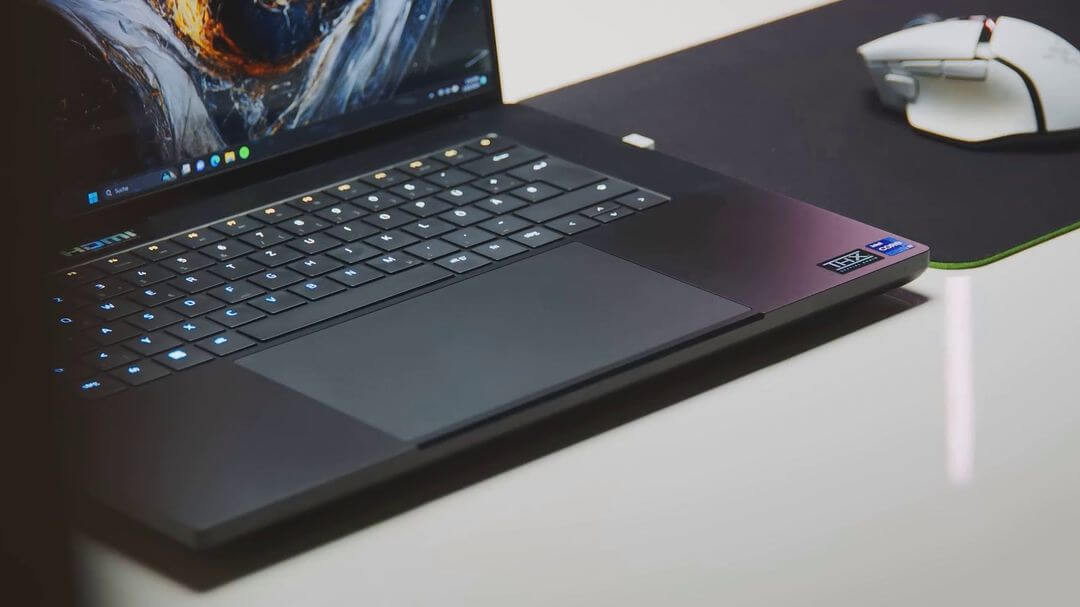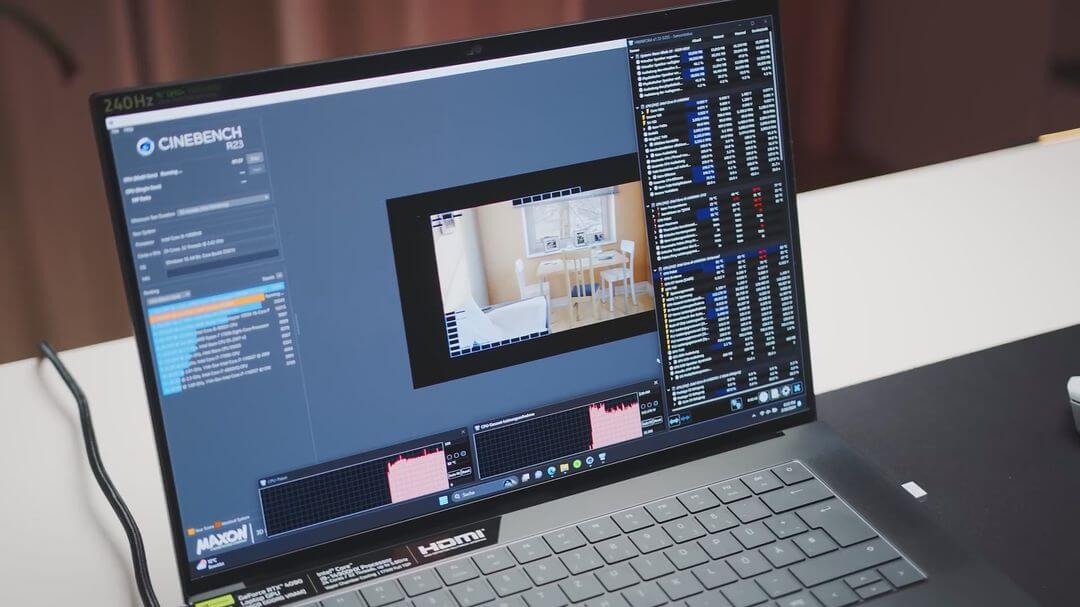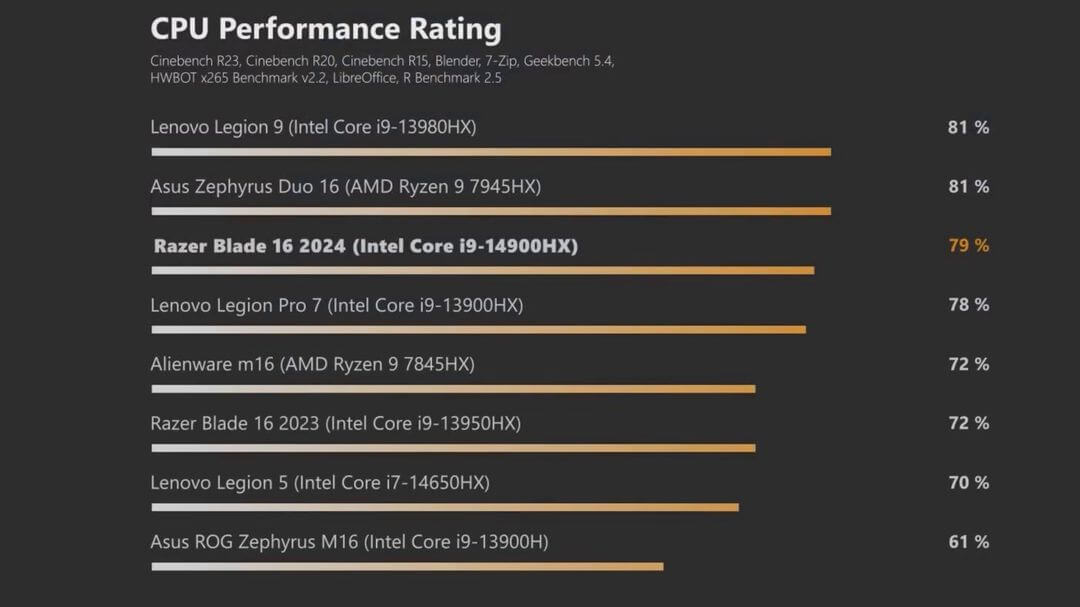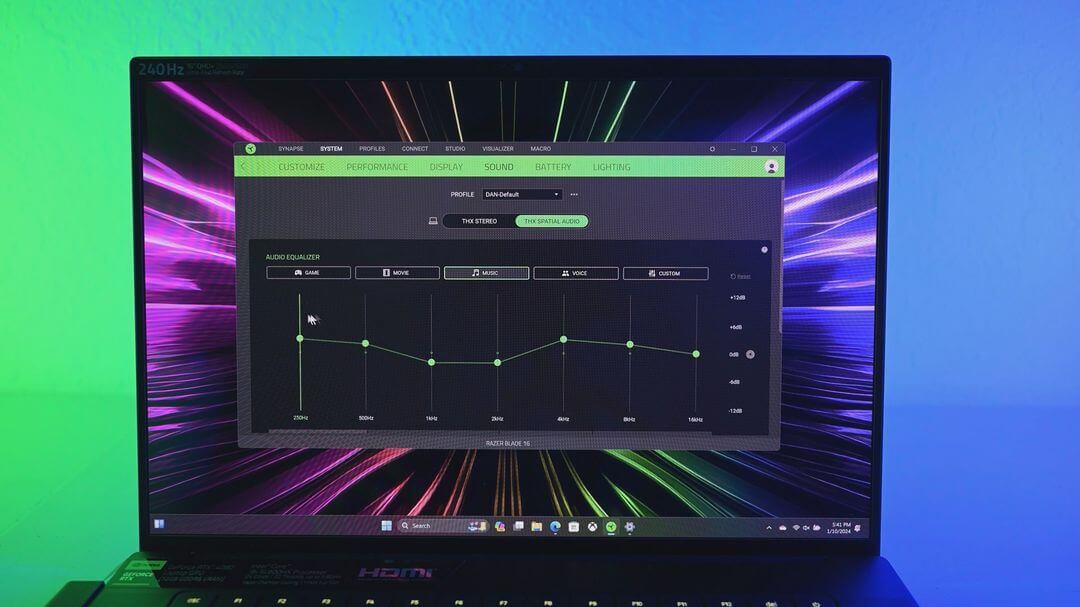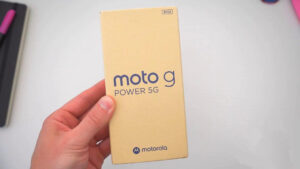Razer Blade 16 (2024) Review: New QHD+ OLED display, but the same body!
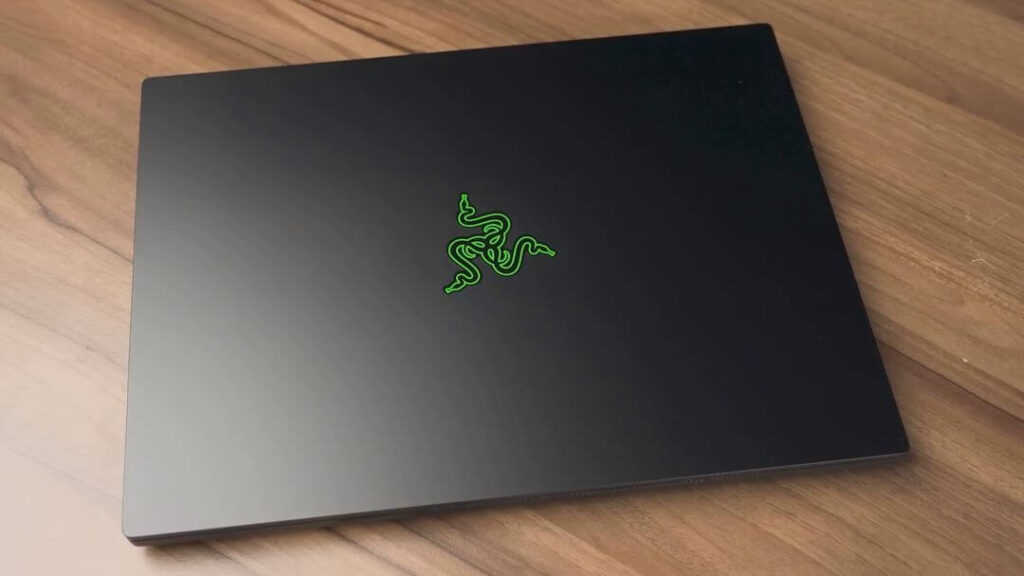
Today we’re delving into the world of gaming laptops with the Razer Blade 16 (2024). Razer, known for its cutting-edge technology and sleek designs, has expanded its laptop lineup in recent years, including larger models such as the 16 and 18-inch variants. The Blade 16 (2024) stands as the successor to its predecessor, which made its debut less than a year ago.
The rapid succession of iterations may raise eyebrows, as it leaves little room for substantial changes across the board. While the Blade 16 (2024) benefits from Intel’s latest 14th generation processors, it retains the same chassis as its predecessor, along with similar graphics card options, notably the Nvidia RTX 40xx series.
However, the real star of the show is the display. In a departure from its predecessor’s Mini LED panel, the Blade 16 (2024) offers a new option featuring a QHD+ OLED panel with a blazing-fast refresh rate of 240 Hz.
As we embark on our review journey, we’ll uncover the strengths and weaknesses of the Blade 16 (2024), evaluating its performance, design, and overall gaming experience.
Razer Blade 16 (2024): Video Review
| Specs | Razer Blade 16 (2024) |
| Display | 16 inch, OLED, 240 Hz, 2560 x1600 (QHD+), 16:10 |
| Processor | Intel Core i9-14900HX 5.8 GHz (14th Gen) |
| Graphics | NVIDIA GeForce RTX 4080 Laptop GPU |
| RAM | 32GB DDR5-5600Hz (Up to 96 GB) |
| Storage | 1TB PCIe 4.0 NVMe M.2 SSD (Up to 8 TB) |
| OS | Windows 11 Home |
| Camera | Windows Hello built-in IR FHD w/ Shutter |
| Wireless | Wi-Fi 7 |
| Ports | 1x Thunderbolt 4 (Up to 100W charging), 1x USB Type C, 3x USB Type A, |
| 1x HDMI 2.1, 1x UHS-II SD Card Reader, 3.5 mm Combo Audio Jack | |
| Battery | 95.2 Whr (6182 mAh, 4 cells) |
| Keyboard | Per-key RGB Powered by Razer Chroma RGB N-Key rollover |
| Touchpad | Precision Glass Multi-Gesture Touchpad |
| Speaker | 4 speaker array (tweeters x2, sub x2) |
| Dimensions | 21.99 x 244 x 355 mm / 0.87" x 9.61" x 13.98" |
| Weight | 2.45 kg / 5.40 lbs. |
Razer Blade 16 (2024): Design
The Razer Blade 16 (2024) maintains its sleek and compact design, a testament to Razer’s commitment to effective aesthetics and functionality. While some might see the lack of chassis modification as a drawback, the existing design was already highly efficient. With dimensions of 21.99 mm x 244 mm x 355 mm, it remains easily portable, fitting snugly into standard backpacks without any hassle.
However, the weight of 2.5 kg, combined with the additional 900 grams from the external power supply, makes it slightly cumbersome for daily commuting. Despite this, the use of a single block of aluminum for the chassis ensures durability and a premium feel, although it does require caution against fingerprints and scratches, particularly with the black finish.
One notable feature of the Blade 16 (2024) is its accessibility for upgrades, with a large cover on the back allowing easy access to internal components. This modular configuration allows users to add a RAM module or SSD in M.2 format, enhancing its longevity and adaptability.
Connectivity remains consistent with previous models, offering a range of ports including USB-A 3.2 Gen 2, Thunderbolt 4, HDMI output, and USB-C 3.2 Gen 2, ensuring compatibility with a variety of peripherals and devices.
Opening the hood reveals the new OLED screen, complemented by a webcam with a privacy shutter for added security. The iconic RGB lighting, present in both the logo and keyboard, adds flair and customization options through the Razer Synapse software. Additionally, the keyboard’s dynamic color scheme adjustment enhances the gaming experience, akin to the DualSense controller on the PS5.
While the keyboard excels in gaming, offering responsive keys and customizable macros, it may pose some challenges for typing due to its thin and closely spaced keys. Additionally, the oversized touchpad, while effective in preventing unintended inputs, suffers from occasional accidental clicks due to hand pressure.
Display
The Blade 16 (2024) laptop sets a new standard with its 16-inch OLED QHD screen boasting a remarkable 240Hz refresh rate. Razer’s decision to focus on upgrading the panel proves to be a wise move, as it elevates the laptop’s visual experience to unparalleled heights.
The 240Hz OLED display provides impeccable color accuracy and calibration. In its native mode, the screen achieves an impressive Average DeltaE of 1.2, ensuring that every hue is rendered with exceptional precision.
Furthermore, the color temperature of the display is finely tuned, closely aligning with the reference white at 6500K. Thanks to OLED technology, the contrast ratio is practically infinite, resulting in deep, true blacks that enrich the viewing experience.
However, one trade-off of OLED technology is its relatively limited maximum brightness, typically hovering around 400 cd/m². While this may not be ideal for outdoor use, especially under direct sunlight, the brilliance of the display compensates for this drawback in most indoor environments. Additionally, the glossy finish of the panel contributes to reflections, though this is a common characteristic of OLED displays.
Despite these minor limitations, the Razer Blade 16 (2024) remains a top choice for both creatives and gamers alike. For gamers, the inclusion of Nvidia G-Sync technology with the 240Hz panel ensures smooth and responsive gameplay, with an imperceptible latency of just 0.2 ms.
Performance
The Razer Blade 16 (2024) impresses with its formidable hardware configuration, featuring an Intel Core i9-14900HX processor and a GeForce RTX 4080 GPU, complemented by 32 GB of RAM. This combination promises uncompromising raw power, whether for gaming or intensive creative tasks.
The Intel Core i9-14900HX processor stands as a technological powerhouse, effortlessly handling demanding games and resource-intensive applications. Benchmark tests, such as Cinebench R23 and PCMark 10, showcase its exceptional performance, with scores exceeding 25,000 points and nearly 8000 points, respectively.
Comparing it to its predecessor, the Blade 16 (2023), reveals a significant performance leap, highlighting the advancements of Intel’s 14th generation processors and their seamless integration into the new Blade 16.
However, such immense power comes with its challenges, particularly in terms of energy consumption and heat dissipation. While Razer effectively manages heat with its cooling system, the accompanying fan noise can be noticeable during intense usage.
In gaming scenarios, the GeForce RTX 4080 shines, delivering exceptional performance. Paired with the Core i9 and 32 GB of RAM, it achieves impressive frame rates in benchmarks, such as Cyberpunk 2077 and Tomb Raider, showing its prowess in handling graphically demanding titles.
While the baseline configuration offers exceptional performance, enthusiasts seeking even greater graphical fidelity can opt for the RTX 4090, albeit at an additional cost.
Audio
Flanking the keyboard are two vents that conceal a sophisticated four-speaker setup comprising two tweeters and two woofers. While it may not compete with an external audio system in bass depth, the Blade 16’s speakers deliver a more impactful low-end response compared to many laptops on the market.
Moreover, the audio output maintains detailed sound reproduction and clarity, provided the volume is kept at reasonable levels. For a truly immersive experience, the Blade 16 (2024) boasts THX Spatial Audio certification, enhancing spatial awareness and positional accuracy in games and multimedia content. However, for the best audio experience, using headphones is recommended.
Battery life
Unlike its predecessor, which struggled to surpass four hours of battery life, the 2024 edition addresses this issue with a massive 95.2 Wh battery. This upgrade translates to an impressive 6 hours and 51 minutes of general usage, bringing it closer to the realm of a full workday—a remarkable feat for a gaming laptop.
Charging the Blade 16 (2024) is facilitated by a robust 330 Watt charger, weighing nearly one kilogram. While it may seem hefty, it provides rapid charging capabilities, with a 0 to 100% charge achieved in approximately 2 hours (or 0 to 75% in just 1 hour). Additionally, users have the option to charge the laptop via two USB-C ports, albeit at a slower pace.
Razer Blade 16 (2024): Conclusion
The Razer Blade 16 (2024) emerges as a formidable gaming powerhouse, despite its relatively swift release following the Blade 16 (2023). Razer continues to impress with compelling upgrades, with the OLED screen alone serving as a standout feature. However, it’s the comprehensive improvements across the board that truly make the Blade 16 (2024) a force to be reckoned with.
One of the most significant enhancements is the refined cooling system, which effectively reduces energy consumption, leading to a substantial boost in battery life.
Powered by Intel’s latest 14th generation Core i9 processor, the Blade 16 (2024) delivers outstanding performance that rivals and even surpasses competing machines.
Here’s a closer look at the key highlights and drawbacks of the Razer Blade 16 (2024):
Pros:
- Successful unibody design
- Perfectly calibrated OLED screen
- Impressive battery life
- Good performance
- Improved cooling
- Scalable configuration
Cons:
- Large touchpad interferes with keyboard
- Reflective screen
- Noisy fans
- High price tag
You can also check out the best-selling Gaming Laptops on Amazon:





